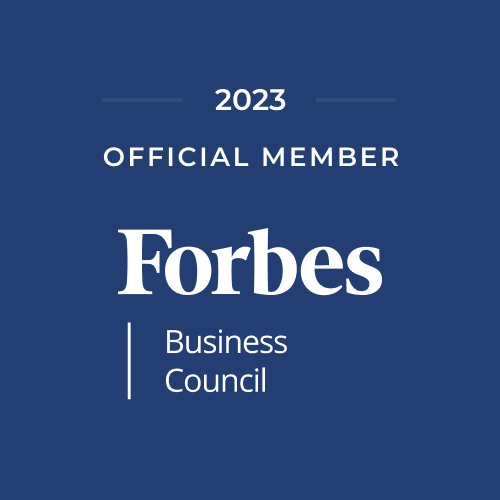Power Reads: 5 Interesting Articles That Will Help You This Week
/Each week, I select a few articles that rise above the fray and hopefully help you on your journey in leadership and the CRE world. They pull from one of four "corners": corporate real estate, technology, management science and anything positive. Each day we can become a better version of ourselves.
1. Was the Office Always This Distracting? Get Ruthless About Your Productivity Now
You’re back at the office. How are you supposed to get any work done? There are in-person meetings and intractable Zoom calls clogging your calendar. Your commute has eaten the hour you once used to corral your inbox. And everyone wants to say hi.
“There’s this slow drip of half-baked conversations. ‘Do you have a minute? Do you have a minute? Do you have a minute?’ ” says Maura Thomas, a productivity trainer based in Austin, Texas.”
Focus in the office has long been tough, especially since companies started ripping down walls in the name of collaboration and lower real-estate costs. But after more than a year at home, the return can feel almost designed to kill your productivity. The background noises sound louder. Your chatty co-worker has 18 months of gossip to share. And there you sit, at your desk, exposed.
2. Offices Still Have a Role to Play But Must Adapt to New Needs
Shutterstock / G-Stock Studio
Flexible working has not killed the office; it died in the 1990s. Back then, when you left the office on a Friday, no one could contact you until you were back in the office on a Monday. You were either at work in the office or at home.
“Then mobile phones arrived, followed by email, laptops and wifi. Work infiltrated home life, and life infiltrated work. But the office has been slow to adapt even though working now is fundamentally different to the 1990s.”
Change will have to happen. There is a work evolution under way unlike anything the office market has experienced before. Yes, we have seen some wacky features such as slides and we have seen the introduction of hot-desking, breakout areas and co-working, but this is different.
3. These 6 Basic Human Needs Should Drive Your Office Design
Getty ImageS
What do you need from your physical space to be most productive at work? That’s the question Kristin Cerutti, design leader at architecture firm Nelson, and Jill Pable, professor and chair of the Interior Architecture & Design Department at Florida State University, asked last month during a presentation at the NeoCon 2021 design conference in Chicago.
“While their answers varied from “sunlight” and “quiet places to focus” to “comfortable seating with a good place to put a necessary cup of coffee” (or for many of us, several throughout the day), the recurrent theme was that workplaces need to “support each individual’s specific needs while still maintaining continuity,” as Cerutti said during the session.”
“Places are not just physical settings, and people are not just bodies that occupy those settings,” added Pable. “People are affected by their environments, which in turn affects how they view themselves, other people and their jobs. We, as designers, should see places as situational environments, and we can’t underestimate the potential of physical space to operate in tandem with other organizational things like trainings, collaboration, learning and workplace interactions. The right setting encourages productivity and well-being.”
4. Your New Office Set-Up Is Going to Look a Lot Like the Old One
As companies prepare for a post-pandemic world, the much-mooted “hub and spoke” workplace model is evolving in unexpected ways. Forget the idea of a city-center office hub and a handful of smaller, suburban spoke offices. Most large corporates are doubling down on existing prime locations, hoping to lure workers back to the office with swish buildings and proximity to restaurants and shops. In the new hybrid set-up, the low-cost, commute-free spoke is your own home.
“For companies that do see a benefit in having additional formal work locations, the answer is not — as some predicted early in the pandemic — directly leasing secondary office spaces in the suburbs. Instead, companies are partnering with flexible workspace providers to give employees access to a network of locations.”
Both options allow companies to cut space overall and swerve difficult decisions about picking non-central locations for dispersed staff. They also avoid the risk of secondary offices becoming, well, secondary, while senior managers and staff with big ambitions or limited responsibilities outside of work gravitate to HQ.
5. Why Companies Should Consider the ‘Hubquarters’ Model
MKDA
Companies are finally moving away from the traditional workplace centered around a corporate headquarters where employees gather on a daily basis and all the leadership presides. When employees were forced to adjust to working away from the office during the pandemic, some discovered that their productivity relied less on where they work and more on how they work.
“Now, employers are looking at innovative workplace models that incorporate the new lessons learned during the pandemic. These models include improved versions of prior workplace trends. Hub and spoke, for example, is a popular model used by many companies that includes one central office and smaller satellite offices. ”
The newest version of that is “hubquarters,” a network of smaller locations designed for both collaboration and independent work. These could be a cluster of small offices, coworking spaces and other remote locations, including home offices. All locations can be a vibrant part of the network, with key leadership present and a dynamic mix of teams collaborating in various combinations to meet increasing employee demands for flexibility.
Your success blesses others. I wish you a great and hugely impactful week!







